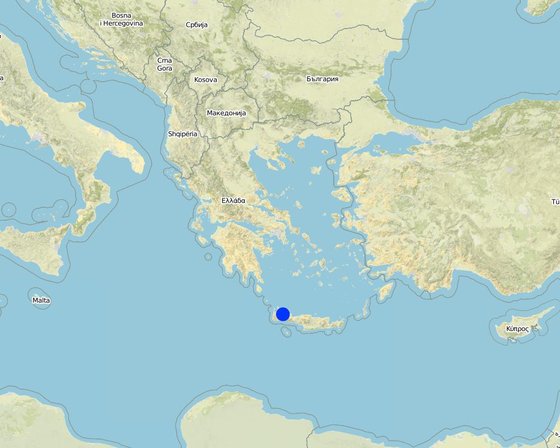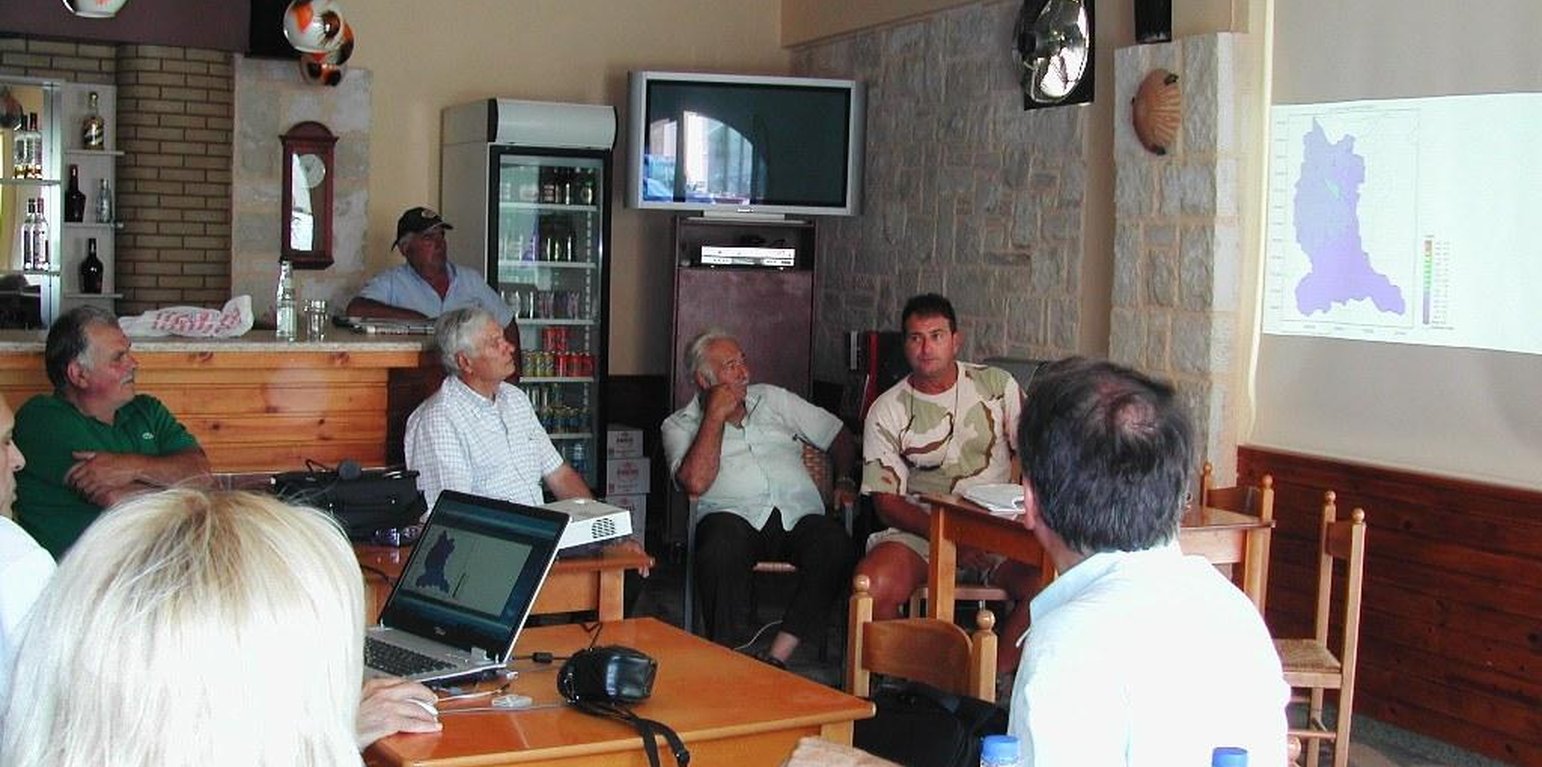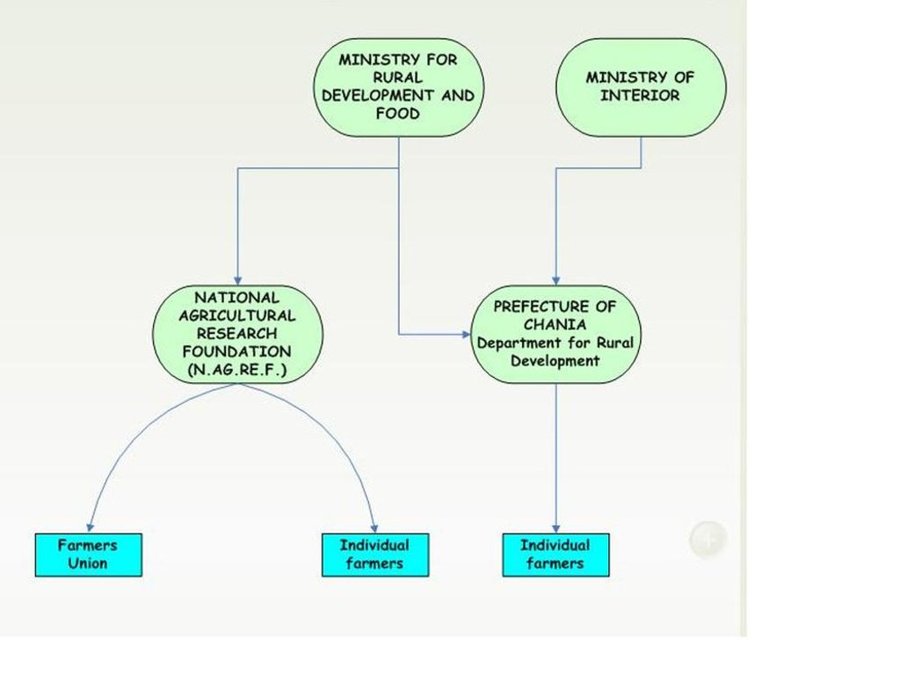Sustainable use of water
(Greece)
Description
Sustainable use of water
Location

Location: Crete, Chania and Heraclion prefectures of Crete, Greece
Geo-reference of selected sites
Initiation date: 20
Year of termination: n.a.
Type of Approach
-
traditional/ indigenous
-
recent local initiative/ innovative
-
project/ programme based

Workshop on land degradation and protection. (C. Kosmas)
Approach aims and enabling environment
Main aims / objectives of the approach
The Approach focused mainly on SLM with other activities (prevention of soil erosion and water conservation)
to promote conservation of natural resources
The SLM Approach addressed the following problems: significnat cost for the installation of the technology
Conditions enabling the implementation of the Technology/ ies applied under the Approach
Conditions hindering the implementation of the Technology/ ies applied under the Approach
-
Availability/ access to financial resources and services: increased cost for first installation
Treatment through the SLM Approach:
-
Legal framework (land tenure, land and water use rights): The existing land ownership, land use rights / water rights greatly hindered the approach implementation if irrigation water is not available
-
Knowledge about SLM, access to technical support: planning the system requirements
Treatment through the SLM Approach:
Participation and roles of stakeholders involved
Stakeholders involved in the Approach and their roles
| What stakeholders / implementing bodies were involved in the Approach? |
Specify stakeholders |
Describe roles of stakeholders |
| local land users/ local communities |
|
The majority of land users are men |
| SLM specialists/ agricultural advisers |
|
|
| national government (planners, decision-makers) |
|
|
Involvement of local land users/ local communities in the different phases of the Approach
none
passive
external support
interactive
self-mobilization
Decision-making on the selection of SLM Technology
Decisions were taken by
-
land users alone (self-initiative)
-
mainly land users, supported by SLM specialists
-
all relevant actors, as part of a participatory approach
-
mainly SLM specialists, following consultation with land users
-
SLM specialists alone
-
politicians/ leaders
Decisions were made based on
-
evaluation of well-documented SLM knowledge (evidence-based decision-making)
-
research findings
-
personal experience and opinions (undocumented)
Technical support, capacity building, and knowledge management
The following activities or services have been part of the approach
-
Capacity building/ training
-
Advisory service
-
Institution strengthening (organizational development)
-
Monitoring and evaluation
-
Research
Capacity building/ training
Training was provided to the following stakeholders
-
land users
-
field staff/ advisers
Form of training
-
on-the-job
-
farmer-to-farmer
-
demonstration areas
-
public meetings
-
courses
Subjects covered
Conservation of natural resources
Advisory service
Advisory service was provided
-
on land users' fields
-
at permanent centres
Name of method used for advisory service: analysis of production; Key elements: cost production, total production
Advisory service is quite adequate to ensure the continuation of land conservation activities
Institution strengthening
Institutions have been strengthened / established
-
no
-
yes, a little
-
yes, moderately
-
yes, greatly
Describe institution, roles and responsibilities, members, etc.
Type of support
-
financial
-
capacity building/ training
-
equipment
Further details
Research
Research treated the following topics
-
sociology
-
economics / marketing
-
ecology
-
technology
ISPOT, AUA
Research was carried out both on station and on-farm
Financing and external material support
Annual budget in USD for the SLM component
-
< 2,000
-
2,000-10,000
-
10,000-100,000
-
100,000-1,000,000
-
> 1,000,000
Precise annual budget: n.a.
The following services or incentives have been provided to land users
-
Financial/ material support provided to land users
-
Subsidies for specific inputs
-
Credit
-
Other incentives or instruments
Impact analysis and concluding statements
Impacts of the Approach
No
Yes, little
Yes, moderately
Yes, greatly
Did the Approach help land users to implement and maintain SLM Technologies?
Decrease in soil loss and increase in water conservation
Did the Approach empower socially and economically disadvantaged groups?
mainly men, old aged Greeks
Did other land users / projects adopt the Approach?
Land users in Pelloponese
Main motivation of land users to implement SLM
-
increased production
-
increased profit(ability), improved cost-benefit-ratio
-
reduced land degradation
-
reduced risk of disasters
-
reduced workload
-
payments/ subsidies
-
rules and regulations (fines)/ enforcement
-
prestige, social pressure/ social cohesion
-
affiliation to movement/ project/ group/ networks
-
environmental consciousness
-
customs and beliefs, morals
-
enhanced SLM knowledge and skills
-
aesthetic improvement
-
conflict mitigation
Sustainability of Approach activities
Can the land users sustain what hat been implemented through the Approach (without external support)?
the cost resulting from the application of the technique is moderate
Conclusions and lessons learnt
Strengths: land user's view
Strengths: compiler’s or other key resource person’s view
Weaknesses/ disadvantages/ risks: land user's viewhow to overcome
Weaknesses/ disadvantages/ risks: compiler’s or other key resource person’s viewhow to overcome
References
Date of documentation: June 30, 2009
Last update: July 18, 2017
Resource persons
-
Costas Kosmas (lsos2kok@aua.gr) - SLM specialist
Full description in the WOCAT database
Documentation was faciliated by
Institution
- Agricultural University of Athens (AUA) - Greece
Project






